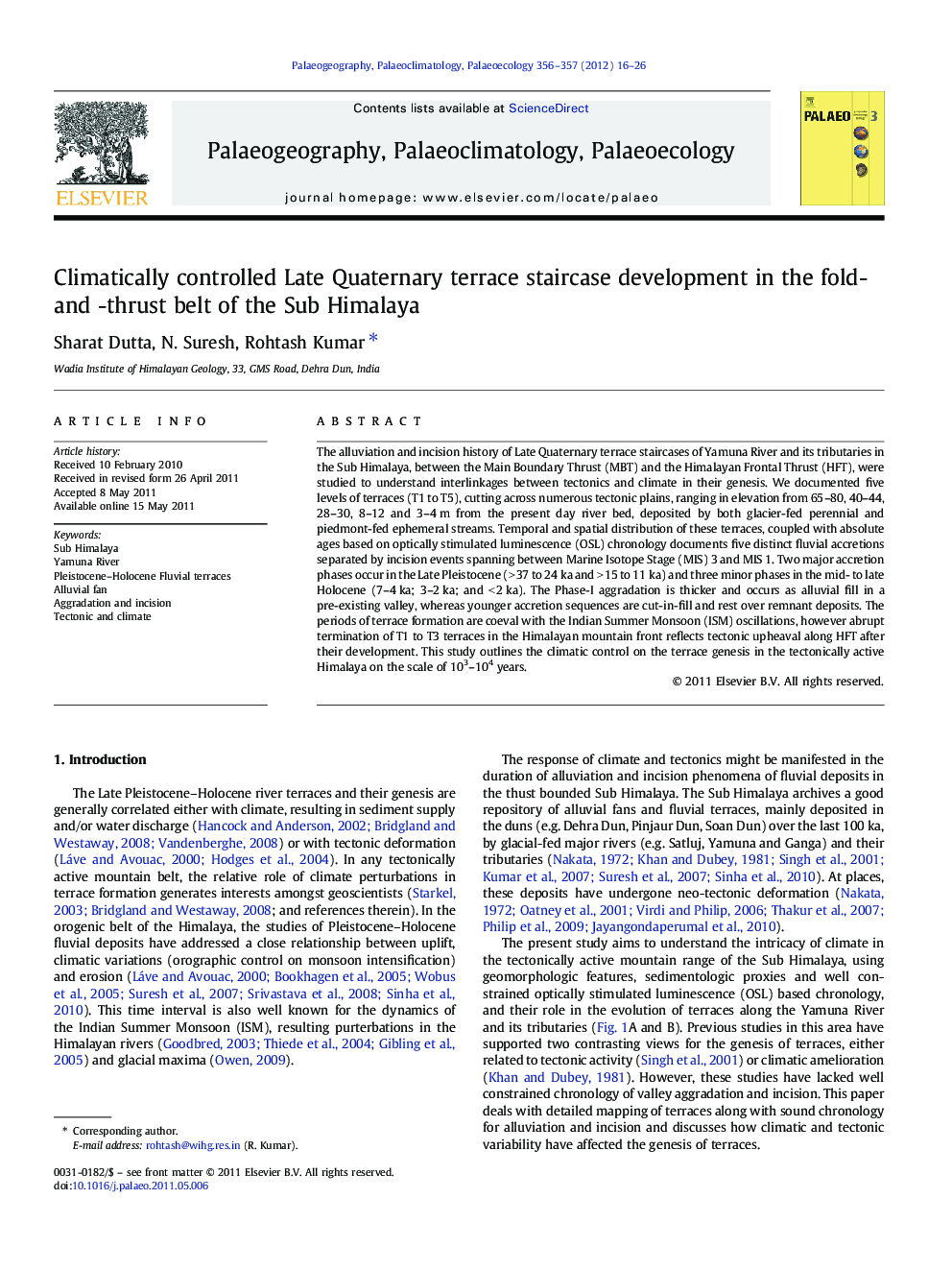| کد مقاله | کد نشریه | سال انتشار | مقاله انگلیسی | نسخه تمام متن |
|---|---|---|---|---|
| 4466804 | 1622223 | 2012 | 11 صفحه PDF | دانلود رایگان |

The alluviation and incision history of Late Quaternary terrace staircases of Yamuna River and its tributaries in the Sub Himalaya, between the Main Boundary Thrust (MBT) and the Himalayan Frontal Thrust (HFT), were studied to understand interlinkages between tectonics and climate in their genesis. We documented five levels of terraces (T1 to T5), cutting across numerous tectonic plains, ranging in elevation from 65–80, 40–44, 28–30, 8–12 and 3–4 m from the present day river bed, deposited by both glacier-fed perennial and piedmont-fed ephemeral streams. Temporal and spatial distribution of these terraces, coupled with absolute ages based on optically stimulated luminescence (OSL) chronology documents five distinct fluvial accretions separated by incision events spanning between Marine Isotope Stage (MIS) 3 and MIS 1. Two major accretion phases occur in the Late Pleistocene (> 37 to 24 ka and > 15 to 11 ka) and three minor phases in the mid- to late Holocene (7–4 ka; 3–2 ka; and < 2 ka). The Phase-I aggradation is thicker and occurs as alluvial fill in a pre-existing valley, whereas younger accretion sequences are cut-in-fill and rest over remnant deposits. The periods of terrace formation are coeval with the Indian Summer Monsoon (ISM) oscillations, however abrupt termination of T1 to T3 terraces in the Himalayan mountain front reflects tectonic upheaval along HFT after their development. This study outlines the climatic control on the terrace genesis in the tectonically active Himalaya on the scale of 103–104 years.
► The terraces genesis in the tectonically active Sub-Himalaya is controlled by climate change.
► The frequency and extends of aggradation and incision phases are influence by Late Pleistocene-Holocene Indian Summer Monsoon fluctuations.
► The tectonic uplift along HFT amplified vertical incision before 3 ka.
Journal: Palaeogeography, Palaeoclimatology, Palaeoecology - Volumes 356–357, 15 October 2012, Pages 16–26